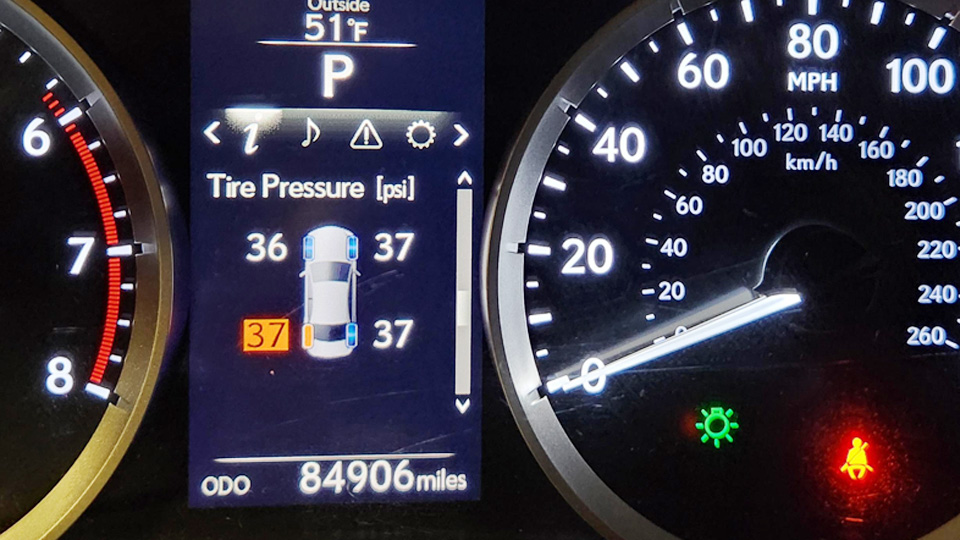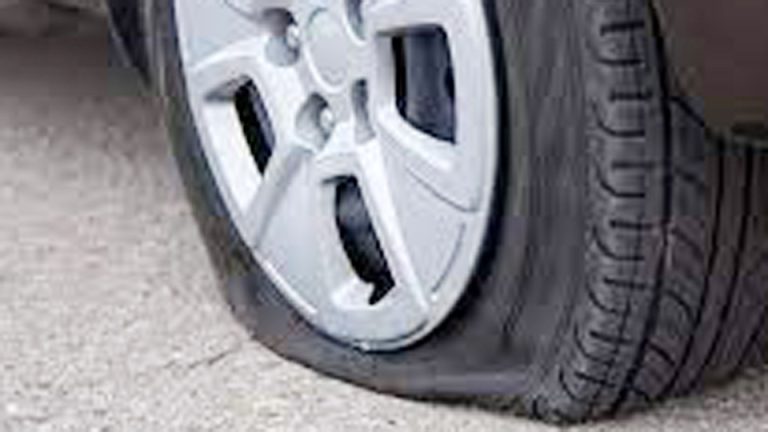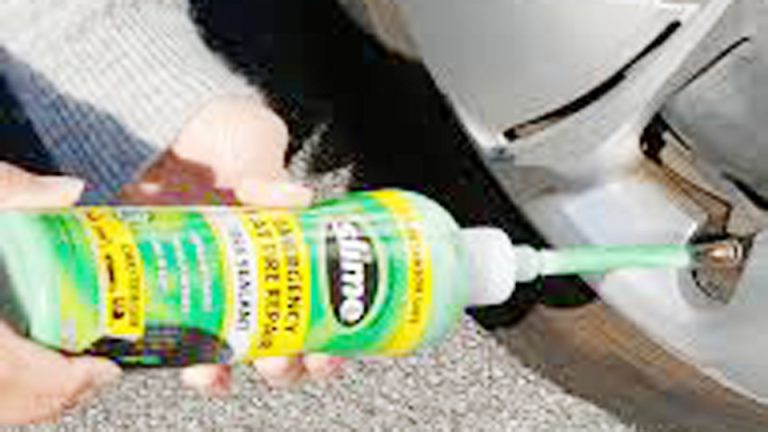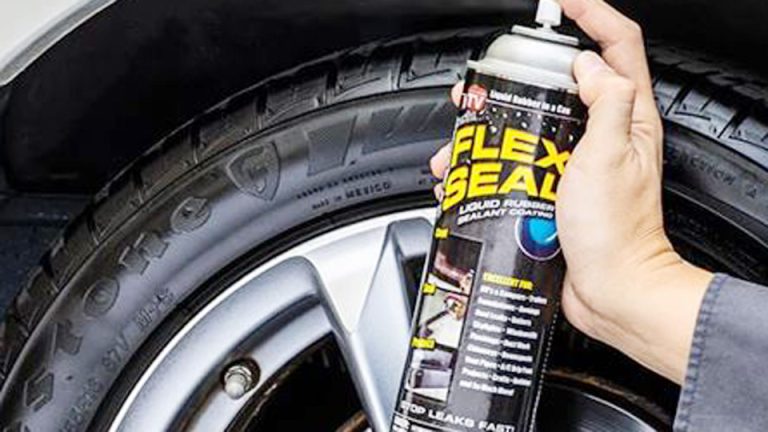It seems like every time I hop in my car, that little warning light pops up again, telling me low tire pressure—even after I’ve just filled the tires. If you’ve been asking yourself, “Why does my car always say low tire pressure?” you’re definitely not alone. A lot of drivers run into this issue, and it can be frustrating when you’re not sure if it’s a real problem or just the sensor acting up.
The truth is, tire pressure warning lights can be triggered by several things—slow leaks, temperature changes, faulty TPMS sensors, or even uneven tire wear. Ignoring it can cost you more than a little annoyance, though; underinflated tires affect fuel economy, shorten tire life, and, most importantly, compromise your safety on the road.
I’ve learned how to track down the real cause behind that stubborn warning light, and in this guide, I’ll walk you through what to check first and how to fix it so you can drive with peace of mind.

Image by reddit
Understanding the Low Tire Pressure Warning
That little “U” with an exclamation point in the middle? That’s your car’s Tire Pressure Monitoring System (TPMS) trying to tell you something. Since 2007, every new car sold in the USA has been required to have a TPMS, a system designed to alert you when your tire pressure drops 25% below the manufacturer’s recommended level. It’s a safety feature, and a darn good one, because low tire pressure can lead to poor handling, reduced fuel efficiency, and even blowouts.
But why does it keep lighting up? The TPMS is sensitive, and several factors can trigger it, from temperature swings to sneaky leaks. Understanding these triggers is the first step to solving the problem and keeping your car running smoothly.
Common Causes of Low Tire Pressure Warnings
Let’s dive into the reasons your car might be flashing that low tire pressure light. I’ve seen these issues in my own garage and on the road, so let’s break them down one by one.
Temperature Changes and Their Impact
If you live anywhere in the USA with distinct seasons—think Midwest winters or Southern summers—you’ve probably noticed your TPMS light loves to make an appearance when the weather shifts. Tires lose or gain about 1 PSI (pounds per square inch) for every 10°F change in temperature.
In January, when it’s 20°F in Chicago, your tires might be 7-10 PSI lower than they were in July’s 80°F heat. This is because cold air contracts, reducing the pressure inside your tires, while warm air expands, increasing it.
I remember a buddy in Minnesota who called me in a panic because his TPMS light came on during a cold snap. His tires were fine, just underinflated due to the freezing temps. A quick top-up at a gas station fixed it, but it’s a reminder to check your tires regularly, especially in fall and winter.
Slow Leaks and Punctures
Sometimes, the issue isn’t the weather—it’s a slow leak or a puncture. Nails, screws, or even a cracked valve stem can cause air to escape gradually. You might not notice a flat tire right away, especially with radial tires, which can look fine even when they’re down 10 PSI. I’ve had to patch tires for friends who drove over construction debris on I-95 and didn’t realize they had a slow leak until the TPMS light screamed for attention.
Check your tires visually for nails or cuts, and listen for a faint hissing sound near the valve stem. If you suspect a leak, a trip to your local auto shop or a DIY patch kit can save the day.
Faulty TPMS Sensors
TPMS sensors are great, but they’re not perfect. These battery-powered gadgets live inside your tire’s valve stem or wheel rim, and their batteries typically last 6-10 years. A dead or faulty sensor can trigger a false low-pressure warning, even if your tires are fine. I once worked on a 2010 Honda CR-V where the TPMS light stayed on despite all four tires being at the recommended 32 PSI. Turned out, one sensor’s battery had died, and a quick replacement fixed it.
If your tires check out but the light persists, you might need to recalibrate the TPMS or replace a sensor. Most vehicles require a reset after adjusting tire pressure, which can be as simple as pressing a button or driving at 30 mph for 30 minutes, depending on your car’s manual.
Incorrect Tire Pressure Settings
Here’s a mistake I’ve made myself: assuming the pressure listed on the tire’s sidewall is the one to follow. That number (often 40-50 PSI) is the maximum safe pressure, not the recommended one for your car. The correct PSI is usually 30-35 for most passenger vehicles and can be found on a sticker inside the driver’s door jamb or in your owner’s manual. For example, my old Toyota Camry called for 32 PSI, but I once overinflated to 40 PSI, thinking it’d improve gas mileage. Instead, I got a bumpy ride and uneven tire wear.
Always check the manufacturer’s recommended PSI, and measure when the tires are cold (before driving or after sitting in the shade for a few hours) for accuracy.
Seasonal and Load-Related Factors
If you’re hauling a trailer or packing the car for a family road trip, the extra weight can affect tire pressure. Manufacturers often list two PSI settings: one for normal driving and one for heavy loads. For instance, my pickup’s door sticker recommends 35 PSI for daily driving but 40 PSI when towing. Ignoring this can cause underinflation, leading to heat buildup and potential tire failure.
Seasonal driving habits also play a role. In winter, lower pressures can improve traction on snow, but too low can damage tires. In summer, overinflation from heat can reduce grip. Regular checks are key, especially before long drives or when the seasons change.
How to Check and Adjust Tire Pressure Like a Pro
Now that you know why your car’s screaming about low tire pressure, let’s talk about how to check and fix it. I’ve done this countless times, from my driveway to gas station air pumps, and it’s easier than you think.
Tools You’ll Need
- Tire Pressure Gauge: A digital or analog gauge costs $5-15 at any auto store. I prefer digital for readability, especially in low light.
- Air Compressor or Pump: Gas stations often have free or coin-operated pumps. A portable compressor for home use is a game-changer.
- Valve Stem Caps: Keep spares in case one’s missing or damaged.
- Owner’s Manual or Door Jamb Sticker: To find the recommended PSI.
Step-by-Step Guide to Checking Tire Pressure
- Check When Tires Are Cold: Measure before driving or after the car’s been sitting for 3+ hours. Hot tires give inaccurate readings.
- Locate the Recommended PSI: Check the driver’s door jamb sticker or owner’s manual. Note if it lists different pressures for front/rear or loaded/unloaded conditions.
- Remove Valve Stem Caps: Unscrew the cap on each tire’s valve stem and keep it safe.
- Use the Gauge: Press the gauge firmly onto the valve stem until the hissing stops. Read the PSI on the gauge.
- Compare to Recommended PSI: If it’s too low, add air. If too high, release some by pressing the valve stem’s center pin with the gauge or a small tool.
- Repeat for All Tires: Don’t forget the spare, especially if it’s a full-size one with a TPMS sensor.
- Recalibrate TPMS (If Needed): Some cars require a manual reset via a dashboard button or driving for a set time. Check your manual.
Adding or Releasing Air
To Add Air: Use an air compressor or gas station pump. Add air in short bursts, checking the pressure frequently to avoid overinflation.
To Release Air: Press the valve stem’s center pin with your gauge or a small tool until the PSI drops to the desired level.
Pro Tip: If you’re in a cold climate, add 2-3 PSI above the recommended level in winter to account for temperature drops. Just don’t exceed the tire’s max PSI.
Table: Recommended Tire Pressure for Common US Vehicles
| Vehicle Type | Typical PSI Range | Notes |
|---|---|---|
| Compact Sedan (e.g., Honda Civic) | 30-35 PSI | Check front/rear differences |
| SUV (e.g., Ford Explorer) | 32-36 PSI | Higher for towing/heavy loads |
| Pickup Truck (e.g., Ford F-150) | 35-40 PSI | Adjust for towing or off-roading |
| Minivan (e.g., Chrysler Pacifica) | 32-36 PSI | Higher for full passenger loads |
Fixing Common Tire Pressure Issues
Once you’ve checked your tires, you might need to address the root cause of the low pressure warning. Here’s how to tackle the most common culprits.
Patching a Slow Leak
If you find a nail or small puncture, a DIY patch kit can work for minor damage. I’ve used these on my old Jeep when I picked up a screw on a backroad. Here’s how:
- Locate the Leak: Spray soapy water on the tire and look for bubbles.
- Prepare the Area: Clean and dry the puncture site.
- Apply the Patch: Follow the kit’s instructions, usually inserting a rubber plug into the hole.
- Check Pressure: Inflate to the recommended PSI and monitor for a day or two.
For larger punctures or sidewall damage, replace the tire. Driving on a damaged tire is a recipe for a blowout.
Replacing a Faulty TPMS Sensor
If your TPMS sensor is acting up, you’ll need to replace it. Sensors cost $30-70 each, and you can do it yourself with some mechanical know-how or take it to a shop. I replaced one on my buddy’s Chevy Silverado last year, and it took about an hour per wheel. Here’s the gist:
- Remove the Tire: Use a jack and lug wrench to take the wheel off.
- Access the Sensor: It’s usually attached to the valve stem inside the tire. Break the tire bead with a tire machine or take it to a shop.
- Replace the Sensor: Install a new sensor, ensuring it’s compatible with your car’s make and model.
- Reassemble and Recalibrate: Mount the tire, inflate to the correct PSI, and reset the TPMS per your manual.
Adjusting for Seasonal Changes
In winter, check tire pressure biweekly, especially after cold snaps. In summer, avoid letting air out of hot tires, as they’ll drop when they cool. I keep a portable compressor in my garage for quick top-ups, especially before cross-country drives.
Pros and Cons of Maintaining Proper Tire Pressure
Keeping your tires at the right PSI isn’t just about silencing that warning light—it’s about safety, performance, and savings. Here’s a quick breakdown:
Pros
- Improved Safety: Proper pressure ensures better handling and braking, reducing accident risk.
- Better Fuel Economy: Underinflated tires increase rolling resistance, burning more gas. Correct PSI can save you 5-10% at the pump.
- Longer Tire Life: Even pressure prevents uneven wear, extending tire lifespan.
- Smoother Ride: Properly inflated tires absorb shocks better, making drives more comfortable.
Cons
- Time Investment: Checking pressure monthly takes a few minutes, but it’s worth it.
- Cost of Tools: A good gauge and compressor are small upfront costs but pay off long-term.
- Learning Curve: New DIYers might need practice to get accurate readings or fix leaks.
Real-World Scenarios and Solutions
Let’s look at some situations I’ve encountered that might sound familiar.
Scenario 1: The Winter TPMS Surprise
You wake up in Denver to a 10°F morning, and your TPMS light is on. Your tires were fine last week, so what gives? The cold has likely dropped your pressure by 5-10 PSI. Check the PSI, add air to the recommended level (maybe a tad higher for buffer), and drive for 10-15 minutes to see if the light resets. If it persists, check for leaks or a faulty sensor.
Scenario 2: The Long Road Trip
You’re driving from Texas to California, and halfway through Arizona, the TPMS light comes on. You’re nowhere near a gas station, and the tires look fine. Check them with a gauge at your next stop, and if they’re slightly low, top them up. If you don’t have a gauge, feel the tires for softness or sagging. In a pinch, drive slowly to the nearest shop, as low pressure can overheat tires on long, hot drives.
Scenario 3: The False Alarm
Your tires are at the right PSI, but the light won’t go off. This happened to me with a 2015 Subaru Outback. The fix was a TPMS reset, which involved pressing a button under the dash and driving for 10 minutes. Check your manual for your car’s reset process, or visit a shop if you suspect a dead sensor.
Maintenance Tips for US Drivers
Driving in the USA means dealing with everything from icy Minnesota winters to scorching Arizona summers. Here are some tailored tips:
Check Monthly: Make it a habit to check tire pressure when you fill up gas or at least once a month. It takes 5 minutes and saves headaches.
Rotate Tires: Every 6,000-8,000 miles, rotate your tires to ensure even wear, especially if you drive on rough roads or highways.
Inspect for Damage: Look for cuts, bulges, or uneven tread wear, especially after hitting potholes or curbs.
Invest in Quality Tools: A reliable digital gauge and a portable compressor (like a $50 Viair model) are worth their weight in gold.
Adjust for Conditions: In snowy regions, slightly lower PSI (within safe limits) can improve traction. In hot climates, check more often to avoid overinflation.
Warning: Don’t Ignore the TPMS Light
Driving with low tire pressure isn’t just annoying—it’s dangerous. Underinflated tires can cause:
- Blowouts: Excess sidewall flexing can overheat and burst tires, especially at highway speeds.
- Poor Handling: Low pressure makes steering sluggish and braking less responsive, increasing accident risk.
- Premature Wear: Underinflated tires wear out faster, costing you hundreds in replacements.
- Fuel Loss: You could lose 5-10% fuel efficiency, hitting your wallet at the pump.
If the TPMS light stays on after checking and adjusting pressure, don’t ignore it. Get it checked by a professional to rule out leaks or sensor issues.
Conclusion
Dealing with a constant low tire pressure warning can feel like a never-ending battle, but it’s one you can win with a little know-how and regular maintenance. Whether it’s a cold snap in Michigan, a sneaky nail in Texas, or a faulty sensor in California, understanding why your car’s TPMS light keeps coming on empowers you to fix it fast and keep your rides safe and smooth. Grab a tire pressure gauge, check your PSI monthly, and don’t be afraid to get your hands dirty with a patch kit or a shop visit. Your car—and your wallet—will thank you.
Keep a small tire repair kit and portable compressor in your trunk for emergencies, especially on long drives. You never know when you’ll need to patch a tire in the middle of nowhere.
FAQ
Why does my TPMS light come on in cold weather?
Cold temperatures cause the air in your tires to contract, lowering the pressure by about 1 PSI for every 10°F drop. Check your tire pressure when the tires are cold and top up to the recommended PSI.
How low is too low for tire pressure?
Anything below 20 PSI is considered a flat tire and unsafe to drive on except in emergencies. Most cars need 30-35 PSI for safe operation, so check your door jamb sticker.
Can I drive with the TPMS light on?
If the pressure is only slightly low (e.g., 25-28 PSI), you can drive cautiously to a gas station or shop to fix it. Below 20 PSI, avoid driving, as it risks blowouts and poor handling.
How do I reset my TPMS light?
After adjusting tire pressure, some cars require a manual reset via a dashboard button or driving at 30 mph for 10-30 minutes. Check your owner’s manual for specifics.
Should I use the tire’s max PSI or the car’s recommended PSI?
Always use the car’s recommended PSI (found on the door jamb or manual), not the tire’s max PSI. The max is for extreme loads, not daily driving, and can cause harsh rides or blowouts.



